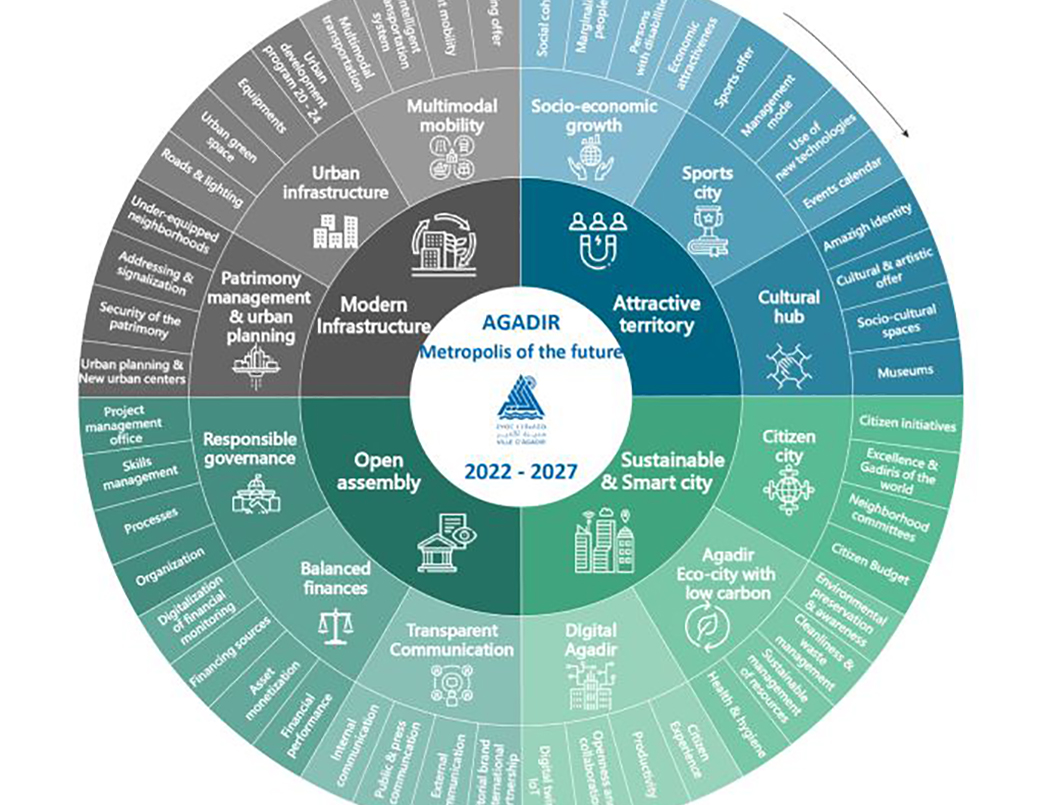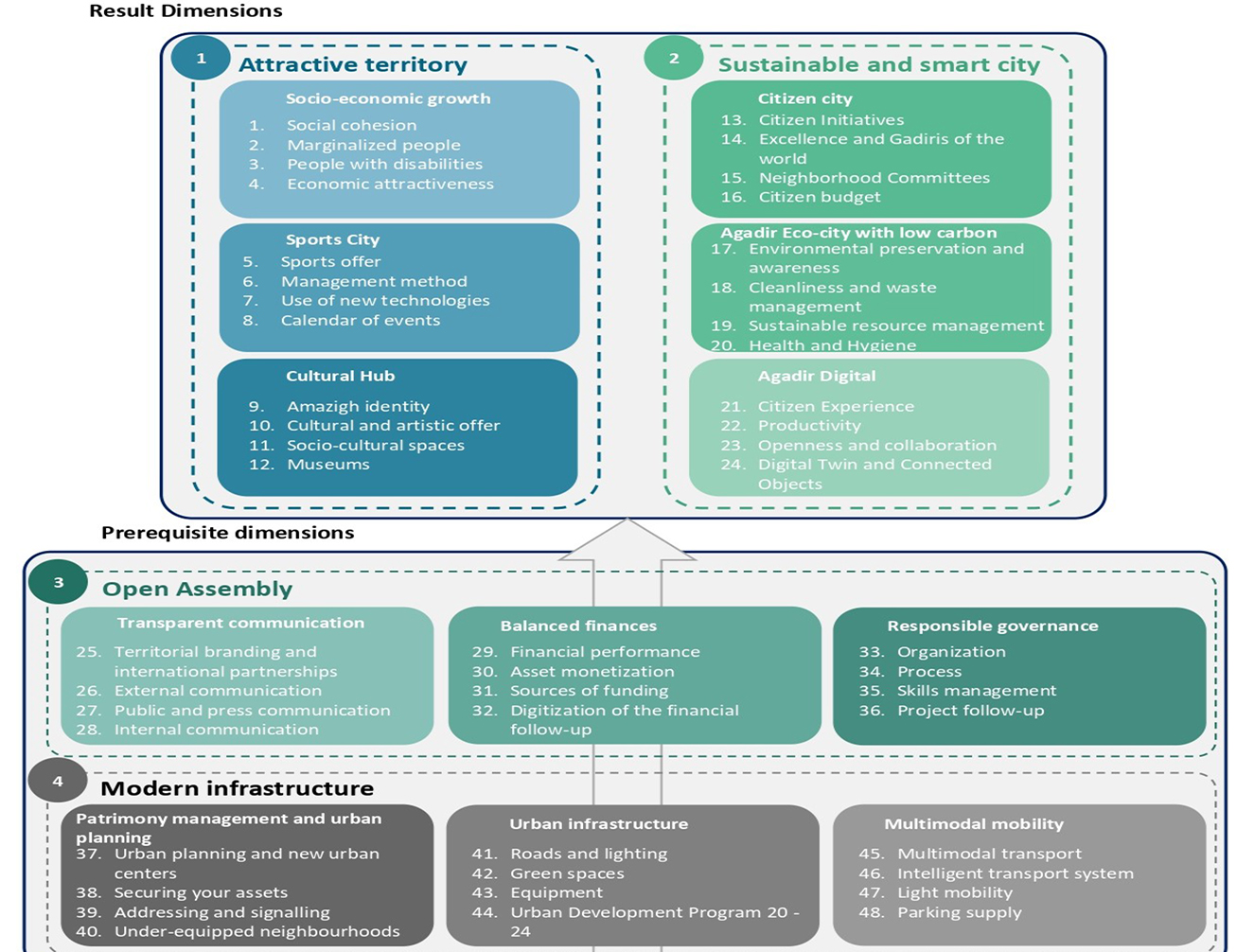
Close

Approach Words: Capacity Building, Strategic Planning, Urban Livability
Public Policy Instruments: Communicative, Financial Mechanism, Physical Intervention, Planning
The Agadir Communal Action Plan (PAC)1 is a local plan that sets a framework for development in the City of Agadir for six years (2022-2027)2. The plan aligns with the regional strategy entitled “Agadir: Horizon 2030”i 3, for the Souss-Massa Region, as Agadir is part of this region, aiming to deal with the challenges related to hosting matches for the 2026 Africa Cup of Nations and the 2030 World Cup.

Title: Methodology Adopted for Developing the Communal Action Plan.
Source: Click Here

Title: Communal Action Plan Framework.
Source: Click Here

Title: The Four Dimensions (General Objectives) of the Communal Action Plan.
Source: Click Here

Title: Participatory Meetings During the Diagnosis Phase of the Project.
Source: Click Here
The Plan embodies the vision of “making Agadir an attractive, modern metropolis open to its citizens and a model of sustainable and smart transition.”4 This vision is supported by four dimensions, which serve as general objectives: Attractive Territory, Sustainable and Smart City, Open Assembly, and Modern Infrastructure5. These dimensions encompass 12 themes (strategic objectives) and 48 projects (Strategies)6. The four dimensions are as follows:
To develop this plan, a methodology of 4 phases was adopted:

Owner/Developer (Public)

Consultant/Designer

Contractor/Implementer
It is worth noting that the project adopted a participatory approach with different actors at the city level11, especially during the diagnostic phase and crafting the vision. These consultations were marked by the participation of more than 1,000 individuals and approximately 140 local bodies and associations12.
The Communal Council of Agadir initiated the project, and it requires funding of more than $400 million13. The municipal council of Agadir allocated $250 million to fund the plan and its implementation14, while the private sector financed the remaining cost15.
Currently, 48% (13 projects) of the scheduled projects have been launched between 2022 and 202316. However, 26% are in the process of being launched (7 projects), and a similar share (26%) is on hold (7 projects) due to constraints related to land mobilization and geotechnical issues17.
Project Link
Endnotes
i. More info about Agadir: Horizon 2030 strategy is available at this link: https://medias24.com/2024/05/09/agadir-horizon-2030-une-ville-bien-partie-pour-relever-les-defis-de-lorganisation-de-la-coupe-du-monde/
References